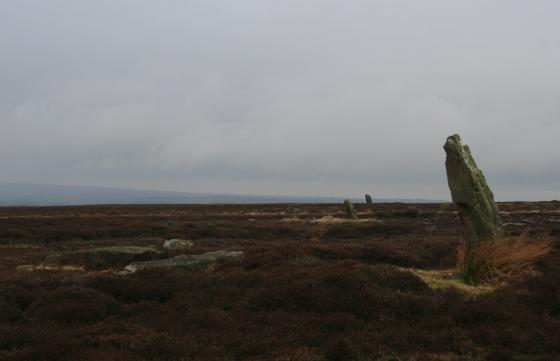“Originally the mound had been enclosed by, or enclosed a stone circle, 30 feet in diameter, in the form of a wall 4 feet thick, traces of which were found on the south-east side of the barrow. Seven cremated internments had been made in this mound; two of these were accompanied by food vessels. A third vessel stood by the side of an urn holding calcined bones.
At the centre of the mound on the natural surface was a stone net-sinker, very similar to two others found with urns in the Rudda Howe at Staintondale. If these two barrows are not the last resting place of fisher-folk, at any rate fisher -folk took a share in building them.
More remarkable was the occurence in the body of the barrow of over 150 stones of varied sizes and shapes and all with cup-like hollows, usually on one side, sometimes on two. Generally a stone has one cup only; but sometimes two, three or even four cups have been hollowed out. Other peculiarly marked stones were also found, one with a incised cross, and another with a V-shaped mark.”
Frank Elgee
Early Man In N.E. Yorkshire
1930

























































































